Aesthetic Consultation: Lindsey Look
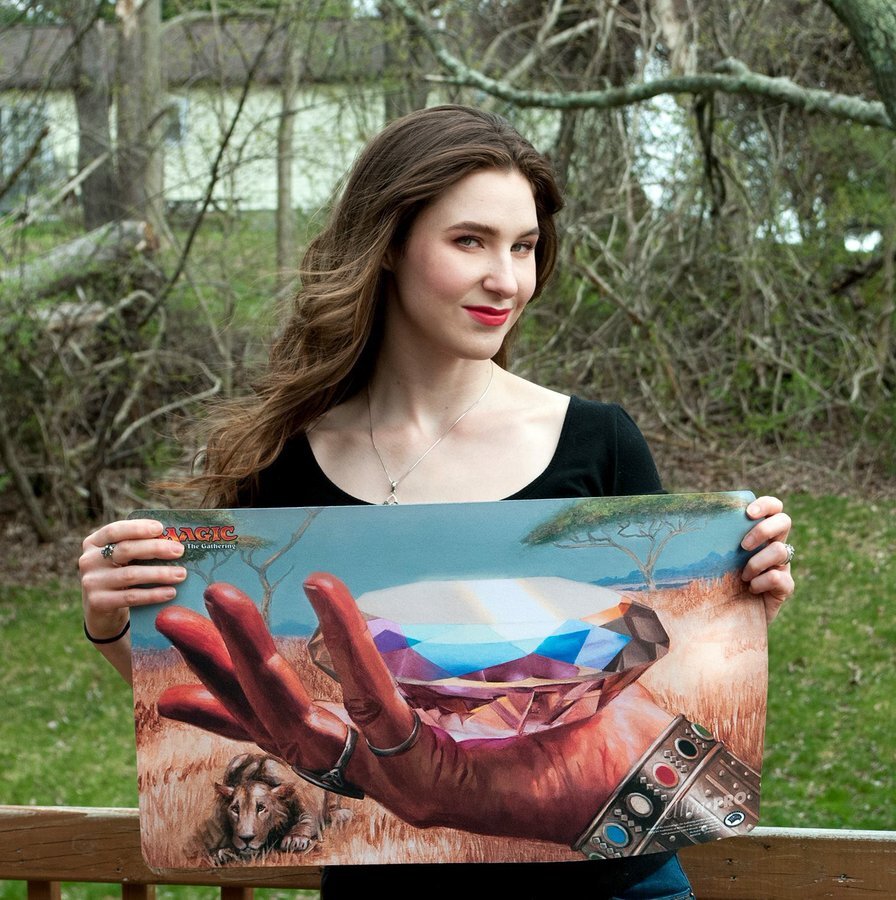
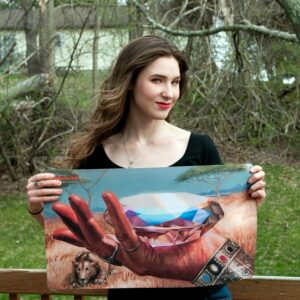
When Lindsey Look discovered that she'd won a Chesley Award, she was "shocked."
Look's first assignment for Magic: The Gathering wasn't just a single card, but six pieces of art needed for a refresh of a well-liked cycle of mana rocks. Her take on the "Diamond" cycle, which debuted in Commander 2014, has been reprinted three times since and is now the most common version. The sixth card in that cycle, of course, is Lion's Eye Diamond
She's also responsible for providing the art for the completion of another mana rock cycle: the enemy-colored Talismans, printed in 2019's Modern Horizons. But it was her art on Sublime Epiphany
The blue instant, printed in Core Set 2021, has been a popular pick for Commander players in its relatively short history, appearing in nearly 20,000 decks, according to EDHREC. That popularity is in no small part due to Look's art, which depicts a surreal take that harkens back to the early days of Magic -- especially blue cards. Earlier this month, it became evident that it wasn't only Commander players who have developed an affinity to Sublime Epiphany, however.
The Association of Science Fiction & Fantasy Artists (ASFA), a nonprofit organization comprised of artists, publishers and collectors, revealed its choices for the 2021 Chesley Award winners in early February. Look's take on Sublime Epiphany was on that list, winning in the category of "Best Gaming-Related Illustration." Also nominated in that category was a piece by Joanna Barnum for the roleplaying game Overlight; Seb McKinnon's take on Cuombajj Witches

"I actually asked the ASFA president (and 2021 Hugo Award winner for best fan artist, Sara Felix) if she was sure the news was correct. Apparently it is?" Look joked. "I don't think any fantasy artist does what they do for awards and accolades. I was thrilled to just be nominated, and it truly didn't register that actually winning something was a possibility. But I'm so very, very honored."
Look said the piece for Sublime Epiphany was under the care of Core Set 2021's art director, and prolific artist in her own right, Cynthia Sheppard, who provided Look with all the pertinent details. "Wizards of the Coast tends to give artists a fair amount of free reign when it comes to the art, but this was probably the most open-ended assignment I'd gotten from them," said Look. "The general gist of it was that they wanted to abstractly depict the essence of what it meant to be blue in Magic, in a deeply symbolic way." That'd be accomplished by portraying "unfettered intellect literally flying around, knowledge overflowing like water, a maze of ideas in someone's head -- these were all concepts we wanted to somehow show."
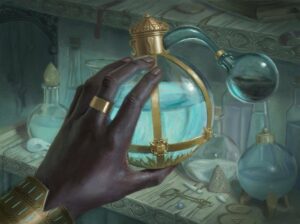
The inspiration for Sublime Epiphany, as is often the case when it comes to creativity, struck Look unexpectedly. "I get images in my head sometimes, often when I'm doing something completely irrelevant to art, like going for a walk or singing in the shower," she said. "That's what happened with this -- I suddenly had a clear picture in my mind, and sketched it digitally before I forgot." While she continued working at the concept, Look said it was that first sketch that was approved for the card itself.
With a concept ready to go, Look began work on the final product. And with visual art, even in a piece that shades toward the surreal, like Sublime Epiphany, it's best to work from a reference. For Look, creating that reference required a bit of arts and crafts. The maze contained within the figure's head, said Look, was the "most complicated aspect" of the piece, so to help visualize a cranial labyrinth, she constructed a miniature maze out of cardboard and straws. "Building various elements of a sketch helps me immensely in getting accurate perspective, light, and shadows in a finished painting," she said. "I also hired a lovely, very patient model and took a ton of reference shots of her hands and face with very slight variations to get exactly what I needed."
Look, who was pregnant at the time, opted for a combination of oils and acrylics to render the art for Sublime Epiphany in order to avoid excusive use of more toxic oils and solvents. "I just wen as far as I possibly could with acrylics first, which is a departure for me," she said. After "a day or two" of drying, the painting was photographed, cropped and edited in Photoshop to be uploaded to Hasbro's file transfer system. "It's always a nice feeling when the work is approved quickly and comes with a little note of praise," said Look.
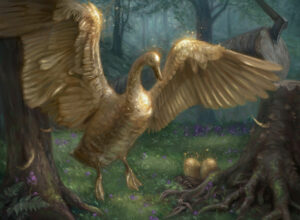
The Chesley Awards were established in 1985 as ASFA's "peer awards", intended to recognize individual works and achievements not otherwise recognized by the Hugo Awards during a given year. The Chesley Awards were originally referred to as simply the ASFA Awards, but were renamed shortly after their inception to honor astronomical artist Chesley Bonestell following his death in 1986. Typically, the awards are presented annually at the World Science Fiction Convention, or if Worldcon is being held outside North America, the awards are presented at the North American Science Fiction Convention.
The Awards are nominated and decided upon by members of the ASFA community. The category of "Best Gaming-Related Illustration" has been in use since 1999, and has featured a number of artists who have won a Chesley Award for Magic art. Past winners in the category include Mitchell Malloy for Frantic Search
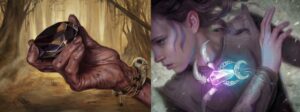
While Sublime Epiphany is Look's favorite work so far, she said her "second favorite" has yet to be revealed. But of the pieces on cards in sets that have been released, "I love the color harmony and overall movement I was able to achieve in Bonder's Ornament." Charcoal Diamond
With the release of Kamigawa: Neon Dynasty, Look's provided the art for 30 cards, but including one of NEO's double-sided Sagas in Azusa's Many Journeys
Outside of Magic, Look's debuting new work in the world of another card game. "The next big project you'll be able to see soon is a full game I did for Smirk and Dagger called Behext," she said. "I had the opportunity to do the box cover and a whole bunch of magical character portraits." The Kickstarter for Behext launches in March.
With in-person events slowly returning, Look said "there's nothing (she'd) love more" than to return to traveling and attending conventions to meet fans and network with some of her favorite fantasy artists -- an extensive list, and one with many recognizable names for fans of Magic. In fact, she has "so, so, so many" favorites in the field, like John William Waterhouse, Arthur Rackham, Michael Whelan, Donato, and Iain McCaig, that her bookshelf has collapsed under the weight of her "ridiculous" number of art books. Twice.
As for contemporaries she admires, Look listed several -- "Wylie Beckert, Iris Compiet, Ryan Pancoast, Chris Rahn, Howard Lyon, Jesper Ejsing, [they're] just a very select few of my current favorites," she said. "Also, the work that is being previewed on every Magic set is just stunning."
Look said she's got a selection of Magic merchandise for sale at her website, and prints for a number of her works are available through INPRNT. She also signs cards over the mail via the signing service operated by Mark Aronowitz.
